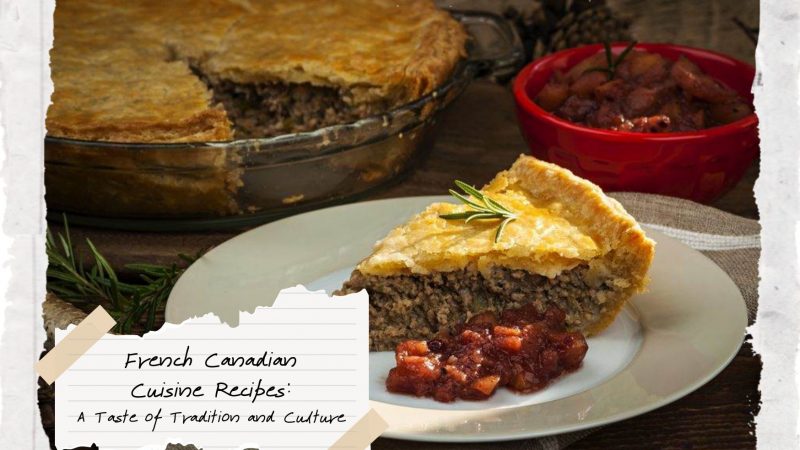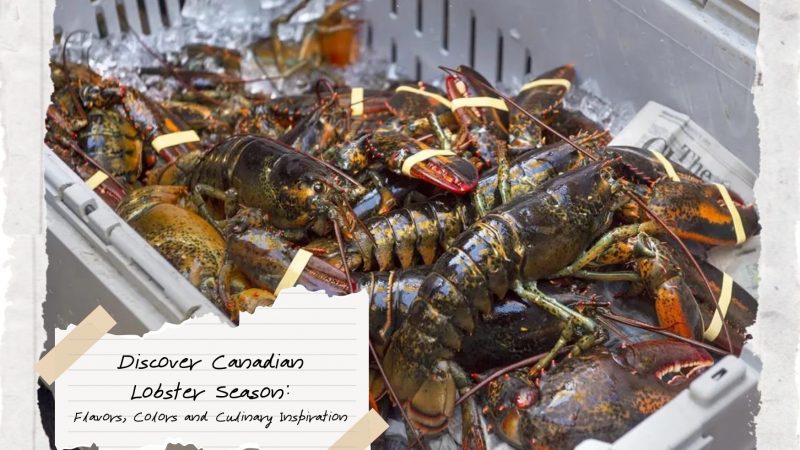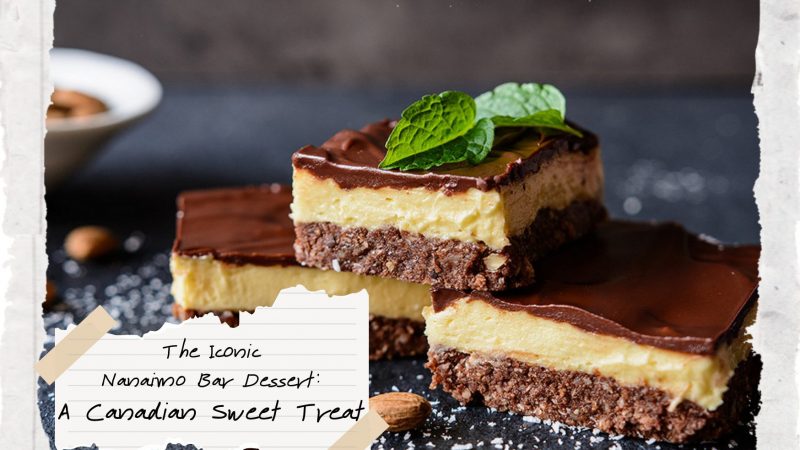Essential Eating: 20 The Best European National Dishes
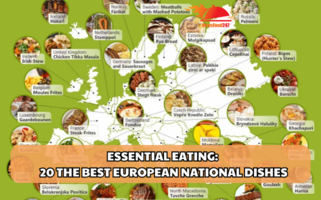
Europe boasts a rich tapestry of nations and mouthwatering cuisines, each reflecting a distinct mixture of cultural, historical, and geographic influences. From the robust, winter-ready dishes of Scandinavia to the Mediterranean fare brimming with sun-ripened ingredients, Newsfood247 compiled a list of European National Dishes. Each dish is so intricately connected to its culture that it feels like it encapsulates the essence of the country in just one plate or bowl.
Tavë kosi, Albania – First European National Dishes
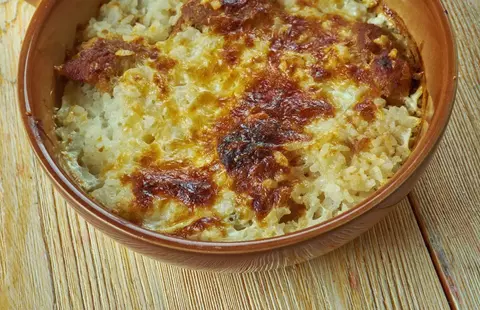
Tavë kosi, a baked lamb and rice dish, is not only Albania’s national specialty but also a representation of its warm hospitality, often prepared for honored guests. The name translates to “yogurt casserole,” consisting of lamb, yogurt, garlic, rice, and eggs, all baked until the top turns crisp and golden brown.
Andorra: Escudella
Escudella is a classic dish from Andorra, typically prepared with whatever ingredients are at hand. During tough times, it usually featured vegetables, rice, and maybe a bit of meat. For special occasions and festivities, however, it includes a range of meats such as pork chunks, homemade sausages, chicken, and lamb.
This dish holds significant cultural importance; in January, during the feast days of Saint Anthony and Saint Sebastian, local religious groups make Escudella to share with the community.
Wiener schnitzel, Austria
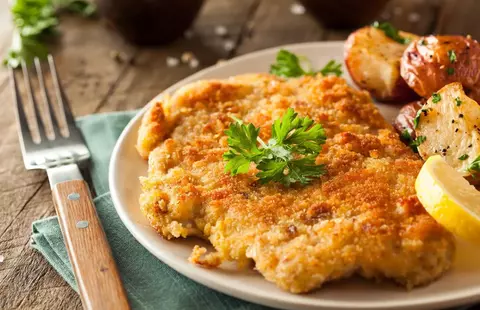
Wiener schnitzel comes in many variations enjoyed in homes and restaurants worldwide, but nothing beats the original. Traditionally, it’s served with boiled potatoes or a light potato salad. The dish is made by flattening a veal cutlet until it’s very thin, then coating it in flour, beaten eggs, and breadcrumbs. The key to achieving that perfect crispy coating lies in shallow-frying it in clarified butter or lard. Figlmüller in Vienna has been known for serving the authentic wiener schnitzel since 1905.
Fish and Chips in England
One of the highlights of my travels in the U.K. is indulging in the classic fish and chip shops scattered across the country, especially along the coastal areas where they truly shine. I personally enjoy getting my fish and chips as takeout from chip shops, where the batter on the fish is airy and thick, and the fries are generally larger and cooked twice for that perfect crispiness. Of course, I can never resist piling on the salt and vinegar. However, trying them at restaurants or pubs offers a different experience too, usually accompanied by a generous scoop of tartar sauce — a creamy blend of capers and pickles — and sometimes a wedge of lemon. It pairs wonderfully with a chilled pint of bitter.
Moules frites, Belgium

Originating from the Flemish coast in Belgium, moules frites, which translates to mussels with fries, is such a beloved dish that the average Belgian consumes about five pounds (approximately 2.2kg) of mussels each year. This dish comes in various styles, including moules marinière, featuring white wine, shallots, parsley, and butter; moules nature, which uses celery, leeks, and butter; and moules à la bière, where beer replaces the white wine.
Austria: Tafelspitz
Austria’s signature dish, Tafelspitz, features incredibly tender boiled beef paired with root vegetables and a mix of spices. It’s a standout meal typically accompanied by applesauce or horseradish sauce along with fried potatoes.
The preferred cut of meat for preparing tafelspitz is tri-tip from the lower loin, although sirloin or rump cuts are sometimes utilized as well.
Bosnia and Herzegovina: Cevapi
Moving on to Bosnia and Herzegovina, cevapi resemble elongated meatballs and consist of a straightforward blend of meat, salt, and pepper. They are traditionally grilled over charcoal, giving them a unique smoky taste.
Different cities boast their own versions of cevapi. While Sarajevo’s cevapi are the most famous, those from Banja Luka, which are grilled in sets of four, and Travnicki cevapi, smaller ones served in groups of twenty with traditional somun bread soaked in broth, are also very popular. A culinary tour to explore these varieties is definitely worth it!
Shopska salad, Bulgaria
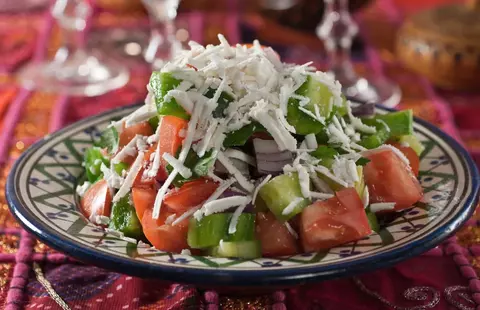
Shopska salad is often regarded as Bulgaria’s unofficial national dish. It’s a delightful and refreshing option perfect for enjoying during the hot summer months, consisting of diced tomatoes, cucumbers, onions, and either roasted or fresh peppers. The salad is seasoned with salt, topped with sunflower oil, and finished off with crumbled sirene cheese, which resembles feta. This dish originated in the 1950s and carries the name of the economical Shopi community from the Shopluk area of Bulgaria.
The Ulster Fry in N. Ireland
As for the Ulster Fry in Northern Ireland, it’s quite similar to both the Full English and Full Scottish breakfasts, but with some unique twists. It features special items like potato bread—a flatbread made with potatoes—and soda bread, which uses baking soda as its leavening agent. However, my personal favorite inclusion has to be the black pudding, a savory delicacy made from a mix of onions, pork fat, oatmeal, and pig’s blood. It pairs nicely with Bushmills Whisky (or so I’ve heard). Check out our Ultimate Guide to Northern Irish food for more details.
Irish Stew in Ireland – The Best European National Dishes
Growing up in Northern Ireland, I was quite familiar with stew, which made me hesitant to spend money on it when I could enjoy it at home every day. Instead, I often opted for dishes like Steak and Guinness pie or battered scampi while in Ireland. Recently, however, I decided to try Irish Stew, and I found it quite different from what I knew as Ulster Irish stew; there seems to be so much variation in recipes. At its core, traditional Irish Stew (shown below left) consists mainly of lamb, onions, and potatoes, sometimes with the addition of carrots, topped with parsley for an elegant touch. It pairs nicely with a pint of Guinness or a glass of Irish whiskey.
Beef Bourguignon in France
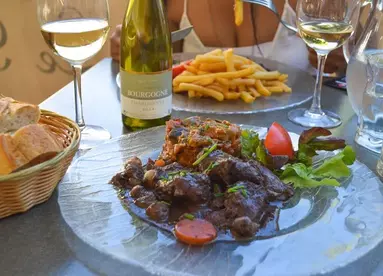
Choosing a dish from France is probably the toughest challenge on this list because of the incredible variety of food available, though we often settle for Steak-Frites. My go-to would be Beef Bourguignon, as it’s widely recognized and recently voted as France’s National Dish by 23% of people. Its popularity is partly due to the inclusion of red wine in the recipe, which features tender beef braised in red wine along with carrots, mushrooms, and shallots. The best place to enjoy Beef Bourguignon is in Burgundy (like in Beaune, shown below), and it literally means “Beef from Burgundy.” This dish is perfect with Burgundy wine and perhaps a Macaron for dessert (not to be confused with Macaroons).
Steak-Frites in Belgium
Whenever we travel the globe, Steak-Frites is a dish we can always count on. A succulent rib-eye steak, also known as entrecote in French, paired with a rich pepper sauce (au poivre) and served alongside French fries, which Belgians prefer to call Belgian Fries. This is a nod to the fact that American soldiers mistakenly dubbed these tasty fried potato sticks ‘French fries’ while stationed in Belgium after World War I. The real history of “French fries” actually traces back to Belgium in the late 1600s. In fact, Belgian Fries have earned a spot on the UNESCO list of cultural treasures. Nevertheless, there will always be some friendly rivalry between Belgium and France, though it’s agreed that Belgians brew the finest beers.
Croatia: Zagorski Štrukli
Zagorski Štrukli is recognized as a part of Croatia’s ‘intangible cultural heritage’ by the nation’s Ministry of Culture.
This beloved Croatian meal features a delightful mix of dough and cheese that’s baked until golden and tasty. It is particularly popular in the northern areas of Hrvatsko Zagorje and Zagreb.
Czech Republic: Vepřo Knedlo Zelo
European National Dishes of the Czech Republic translates straightforwardly to ‘pork, dumplings, sauerkraut.’ Usually, pork neck is cooked slowly with garlic, onions, and spices until it becomes incredibly tender, served alongside its braising juice.
Typically, the dumplings are crafted from flour, though sometimes potato is mixed in as well. Sauerkraut is a crucial component added at the end, and this dish pairs wonderfully with some of the renowned Czech beer.
Stegt flæsk, Denmark
Stegt flæsk is a traditional Danish dish featuring fried pork belly, boiled potatoes, and a simple parsley sauce. It has historical roots dating back to the 18th century and is commonly prepared in Danish homes, particularly during the chilly winter months. This comforting meal is often enjoyed at least weekly. The popularity of this dish is so immense that Denmark leads the world in pork consumption. With each person averaging around 154 pounds (70 kg) of pork annually.
Verivorst, Estonia
Verivorst is a classic Estonian sausage made from blood. Especially favored in winter and during festive celebrations when it’s roasted alongside potatoes and pork. Comparable to Spanish morcilla or British black pudding, verivorst includes ingredients like pigs’ blood, pork, barley, onions, allspice, and marjoram. It’s typically accompanied by butter, sour cream, sauerkraut, and a tangy relish crafted from cranberries or lingonberries
Pizza in Italy – European National Dishes
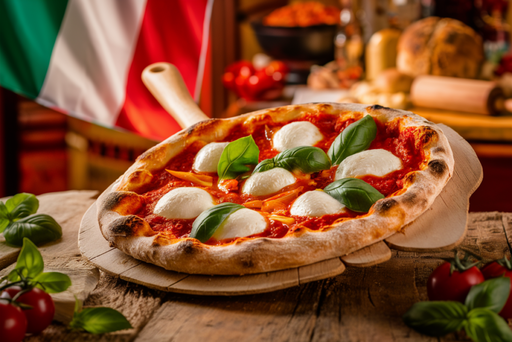
I might end up with a complete list that excludes pasta, even though Manistra na Pome. Or Pasta with Tomato Sauce, is quite popular in Croatia. However, pizza enjoys global popularity, but it’s always best enjoyed in its birthplace. Italy, where the recipes differ from one region to another. For instance, in Rome, you find “pizza bianca,” which translates to “white pizza”. Sometimes lacking tomato sauce and cheese; at its simplest, it’s just bread seasoned with salt and olive oil. On the other hand, what many of us recognize as pizza is the Neapolitan variety from Naples, topped with tomatoes and mozzarella cheese. Regardless, they likely pair well with grappa.
Piadina in San Marino
Nestled within Italy is the small landlocked nation of San Marino, which I’m including here for thoroughness. Unlike other miniature countries like Andorra, Monaco, and the Vatican that we passed by without sampling their food. The Piadina in San Marino is hard to overlook, as it’s available on nearly every street corner in the old city. Essentially, the Piadina is a simple flatbread grilled to perfection and typically filled with dry-cured ham. Or prosciutto crudo, along with the occasional addition of tomato, rocket, and cheese. Moreover, for those seeking a culinary adventure, San Marino boasts its own local cuisine known as Sammarinese cuisine.
Paella in Spain
Beyond fish and chips and Birds Eye fish fingers, my first real seafood experience was enjoying paella in Spain during my teenage years. As my family isn’t very adventurous when it comes to food. This dish, known as Paella de Marisco (Seafood Rice). Is Spain’s national dish, where rice is prepared in a wide pan with seafood. Typically infused with saffron (though I prefer the kick of paprika-spiced pork chorizo). One aspect of Spanish dining that I adore is Tapas. Which consists of small servings of various foods that diners can select from. This style is quite familiar to us in Asia, where we usually order several dishes for the table to share. Rather than having each person receive a single large plate. Enjoying this with some chilled Sangria or perhaps a glass of Rioja enhances the experience.
Fondue in Switzerland
European National Dishes – Switzerland’s official national dish is Fondue. A social meal involving a pot of melted cheese served over a portable stove, accompanied by boiled potatoes and bread. The best places to enjoy this are often in the Swiss Alps resort town. We visited Cafe Du Pont, noted as Zermatt’s oldest restaurant, renowned for its herb-infused cheese fondue. However, finding Fondue for one can be challenging. Leading many to choose the more straightforward “raclette”. Which features melted cheese served with potatoes on a plate (the Swiss truly have a passion for cheese). Additionally, I enjoy rösti, another dish celebrated in Switzerland, resembling hash browns. Pairing it with some Appenzeller cheese could make for a fantastic combination


